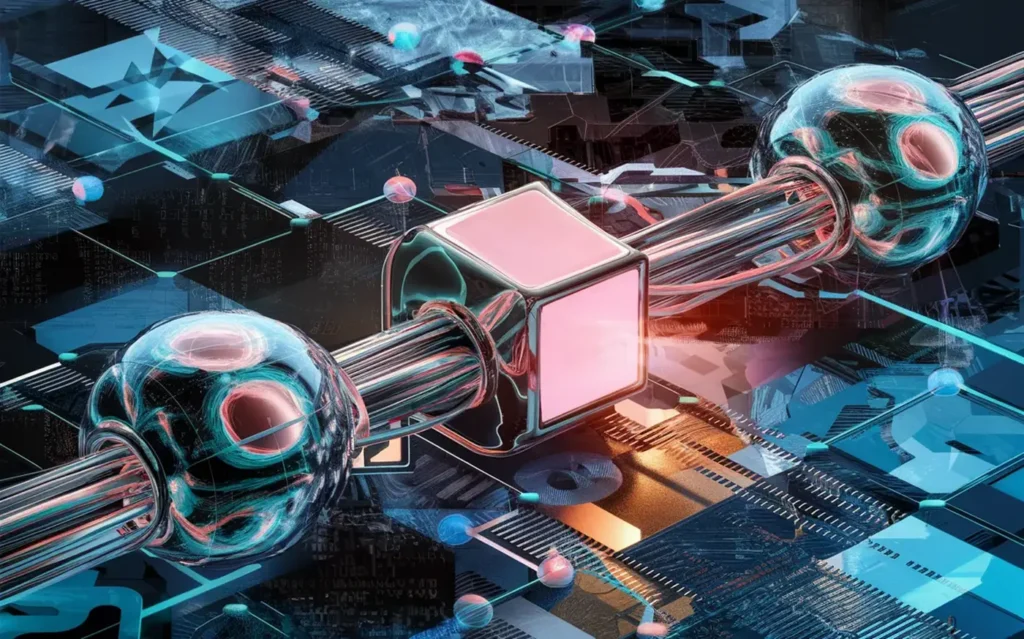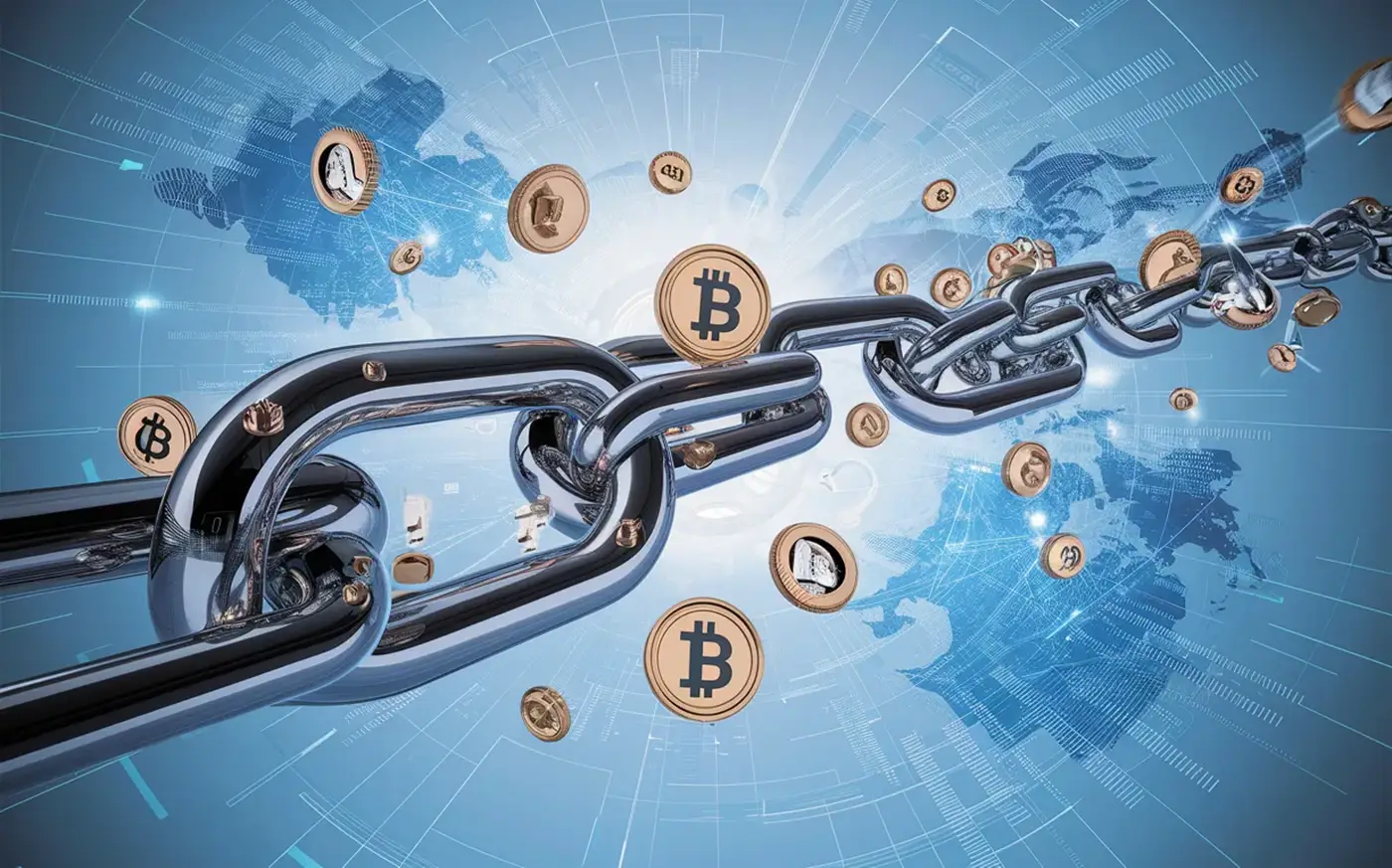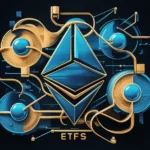If no one controls Bitcoin, then how does it exist?” This is a question that many have whenever they hear about Bitcoin and other cryptocurrencies. The answer to this question is “Blockchain.”
Blockchain technology is the backbone of the cryptocurrency industry. This revolutionary technology has also been behind advancements in various sectors, including supply chain, healthcare, art, finance, etc.
In this guide, we will go into the details to understand blockchain technology, its components, and why it is rapidly gaining interest. This article has been well-detailed to attract even those just starting with blockchain.
What is Blockchain?
A blockchain is a shared, immutable ledger that runs on computer nodes. This technology is broadly adopted in the cryptocurrency industry to maintain a decentralized record of transactions.
The word “blockchain” is derived from two words, “block” and “chain.” Each transaction that happens is recorded in the form of a “block” of data. This block contains the specifics of the transaction or activity.
Every data block is connected to the other data blocks to form a “chain.” The blocks show the exact time and sequence of transactions. They are attached securely to ensure they cannot be altered, and another block cannot be placed between two existing chains.
The chain is irreversible, and it is known as a blockchain. The blockchain is immutable and tamper-proof, and there is zero chance of compromise by a malicious actor. It creates a ledger of transactions to create a trustless network.
How Does Blockchain Work?
There is no way to alter a block. Therefore, the only trust needed is when a user or program enters the original data that forms the block. This irreversible feature eliminates the need for third parties, making transactions cheaper, more secure, and faster.
A blockchain also comprises programs known as “scripts.” The scripts will handle the functions you usually would in a database, such as entering, accessing, saving, and storing information elsewhere.
A blockchain is also distributed, hence the term distributed ledger technology (DLT). Multiple copies of the transactions are saved to many machines, and the details must match for validity.
The transaction process will vary from one blockchain to the other. For instance, when you initiate a transaction on the Bitcoin blockchain, it will go to the memory pool, and a validator miner will pick it up. The transaction will later go into a block; once it is full, it will be closed and encrypted.
After the block is closed and the transaction is marked as complete, the block will be confirmed after five other blocks are validated.

The process detailed above is for the Bitcoin blockchain and other proof-of-work networks. Other blockchains, such as Ethereum, which runs on proof-of-stake, will have the network randomly choose a validator from the users who have staked Ether. These users will validate blocks.
Key Features of Blockchain Technology

The key features that explain “What is blockchain” and why it is a superior technology include the following:
Decentralization
One of the main features of blockchain technology is decentralization. The decentralized nature ensures no single point of control or failure. This decentralization has seen blockchain become more secure and resistant to hacking attacks.
Transparency
The transactions recorded on the blockchain are transparent and visible to all other users on the network. The transparent nature makes it easy to track and verify transactions. It also ensures that the transactions are accurate.
Efficiency
Blockchains also create fast and more efficient transactions as there is no need for intermediaries like banks. Removing third parties also makes blockchain transactions less costly while promoting efficiency in some business operations.
Immutability
Any transactions recorded on a blockchain cannot be erased or changed. The transactions are permanent and can be verified by anyone with access to the network. This makes the transactions immutable compared to those done on traditional systems where transactions can be reversed.
Consensus Mechanisms
We should also discuss the different consensus mechanisms when answering “What is blockchain?”. The consensus mechanism is the system blockchain users follow to determine the legitimacy of transactions.
Some of the most popular consensus mechanisms include:
Proof of Work
Proof of Work (PoW) is the consensus mechanism used by the Bitcoin blockchain. In PoW, miners compete to solve intricate mathematical problems to add the subsequent block to the blockchain. This process is known as mining, where the first miner who solves the problem gets rewards in cryptocurrency.
The PoW consensus is energy-intensive as the miners need powerful equipment to secure the network and solve mathematical problems.
Proof of Stake
Proof of Stake (PoS) was created to address the weaknesses of the PoW consensus. The Ethereum blockchain switched to PoS as part of its journey to realize Ethereum 2.0, a more efficient blockchain.
The PoS consensus model does not entail miners. Instead, it involves validators, who are selected depending on the amount of cryptocurrency staked on the network. The validators are chosen randomly to generate new blocks and validate network transactions.
The transaction fees blockchain users pay reward the validators for generating new blocks. The validators are chosen depending on the size of their stake.
Other Consensus Mechanisms
PoW and PoW are the most popular consensus mechanisms. However, other algorithms combine the features of the two models.
The first is delegated Proof of Stake (DPoS). This consensus mechanism is similar to PoS. However, token holders vote instead of randomly choosing validators to elect a few delegates who will verify transactions.
Proof of Authority (PoA) is a consensus mechanism where validators are chosen based on their reputation or identity. The network will choose validators depending on the level of trust. They can also be removed if they fail to fulfill their role as per expectations.
Applications of Blockchain Technology

Now that you know what is blockchain, we should explore the applications of blockchain technology.
Blockchain technology is widely used in the cryptocurrency industry. Bitcoin, Ethereum, and Dogecoin all run on blockchain technology. While some cryptocurrencies run on their native blockchains, others run on blockchains that support smart contracts.
The other major use case of blockchain technology is in smart contracts, which has even been acknowledged by the CEO of JPMorgan, Jamie Dimon. The Ethereum blockchain is the king of smart contracts.
Smart contracts are programs that support the creation of decentralized applications (DApps) atop blockchain. The most common smart contracts include Web3 games, decentralized finance (DeFi) platforms, and non-fungible tokens (NFTs).
Blockchain technology can also be used in supply chain management. It can create a ledger of all the transactions with a supply chain. The transaction is recorded as a block on the blockchain for an immutable and transparent supply chain record.
The secure nature of blockchain technology also makes it suitable for use in healthcare. It can be used to improve the security of patient data and manage records.
Blockchain technology is also gaining a use case in the voting sector. It enhances security and transparency in elections through a decentralized and tamper-proof ledger that records all votes. Blockchain‘s use in voting removes the possibility of voter fraud and promotes integrity.
Challenges With Blockchain Technology
Blockchain technology presents immense opportunities because it offers enhanced security, transparency, speed, efficiency, and reduced costs. However, the industry also faces significant challenges, including but not limited to the following:
Scalability Issues
The main issue plaguing a majority of blockchain networks is scalability. While blockchains are expected to be fast and efficient, high network demand can often cause congestion and lead to users paying high fees.
However, this is an issue that many developers are working on resolving. For instance, Bitcoin’s Lightning Network seeks to make transactions faster and more efficient. Ethereum is also improving scalability through its efforts toward realizing Ethereum 2.0.
Energy consumption
The Bitcoin blockchain has often been under criticism for its high electricity consumption when verifying transactions.
The criticism has led Bitcoin miners to seek renewable energy sources to improve efficiency and promote environmental sustainability.
Regulations
The other challenge facing blockchain is regulations. The decentralized nature of blockchain removes the need for third parties to verify transactions, resulting in complaints that criminals can use this network for money laundering and terrorism financing.
In Summary – What is Blockchain?
Blockchain technology is swiftly gaining adoption across different areas, including cryptocurrencies, healthcare, supply chains, and smart contracts. This technology promotes fast, efficient, secure, and low-cost transactions.
As blockchain technology transforms everyday operations, the industry still faces apparent challenges. These issues include scalability, regulatory challenges, and high energy consumption.
Despite the challenges shared with disruptive technology, blockchain continues to find new use cases, including by governments looking to create central bank digital currencies (CBDCs).
FAQs
-
What is blockchain technology?
Blockchain technology is a way of storing and verifying transactions online. The transactions are recorded on a distributed ledger, which all network users can view. Transactions recorded on the blockchain are immutable.
-
What is a node in blockchain?
In crypto and blockchain, a node refers to one of the computers running on the blockchain’s software to validate and store the entire history of transactions on the network.
-
What is an enterprise blockchain?
Enterprise blockchain is a form of permissioned blockchain that streamlines business processes. It also tracks supply chain goods and settles global payments.
-
What are the benefits of blockchain?
Blockchain technology presents unique features such as transparency, immutability, security, fast speed, and decentralization.
-
How does blockchain work?
A blockchain operates by grouping transactions in blocks and connecting them chronologically. No one can change or insert a new block into the existing ones, making it immutable.










